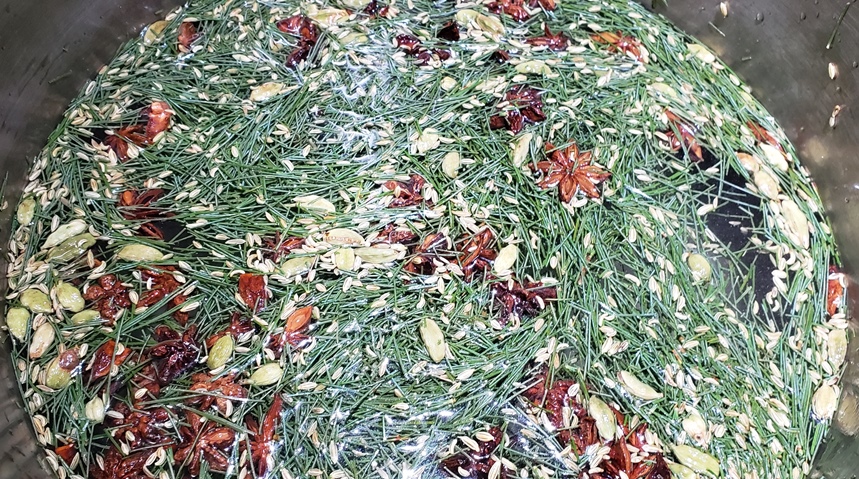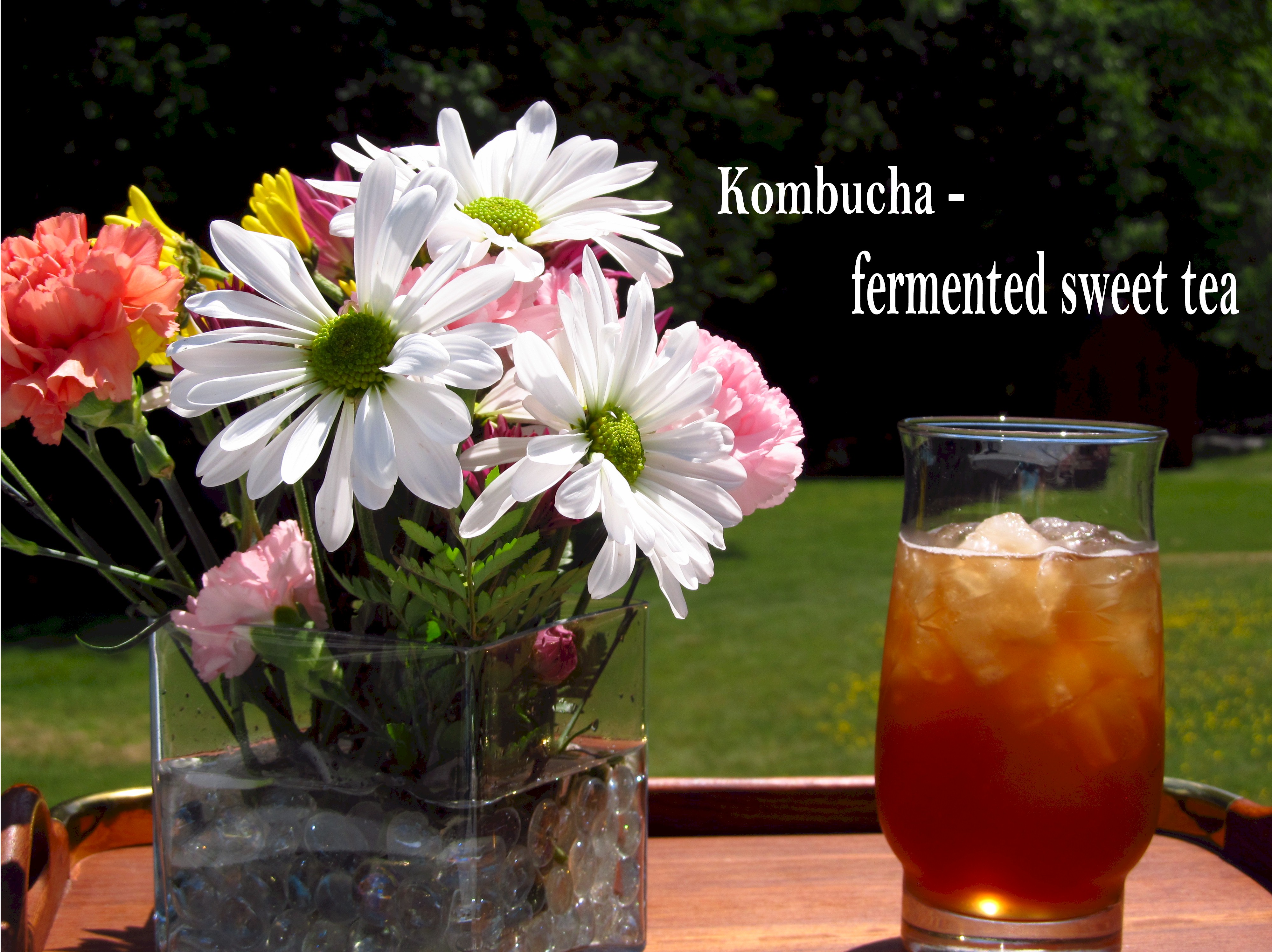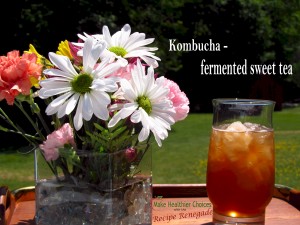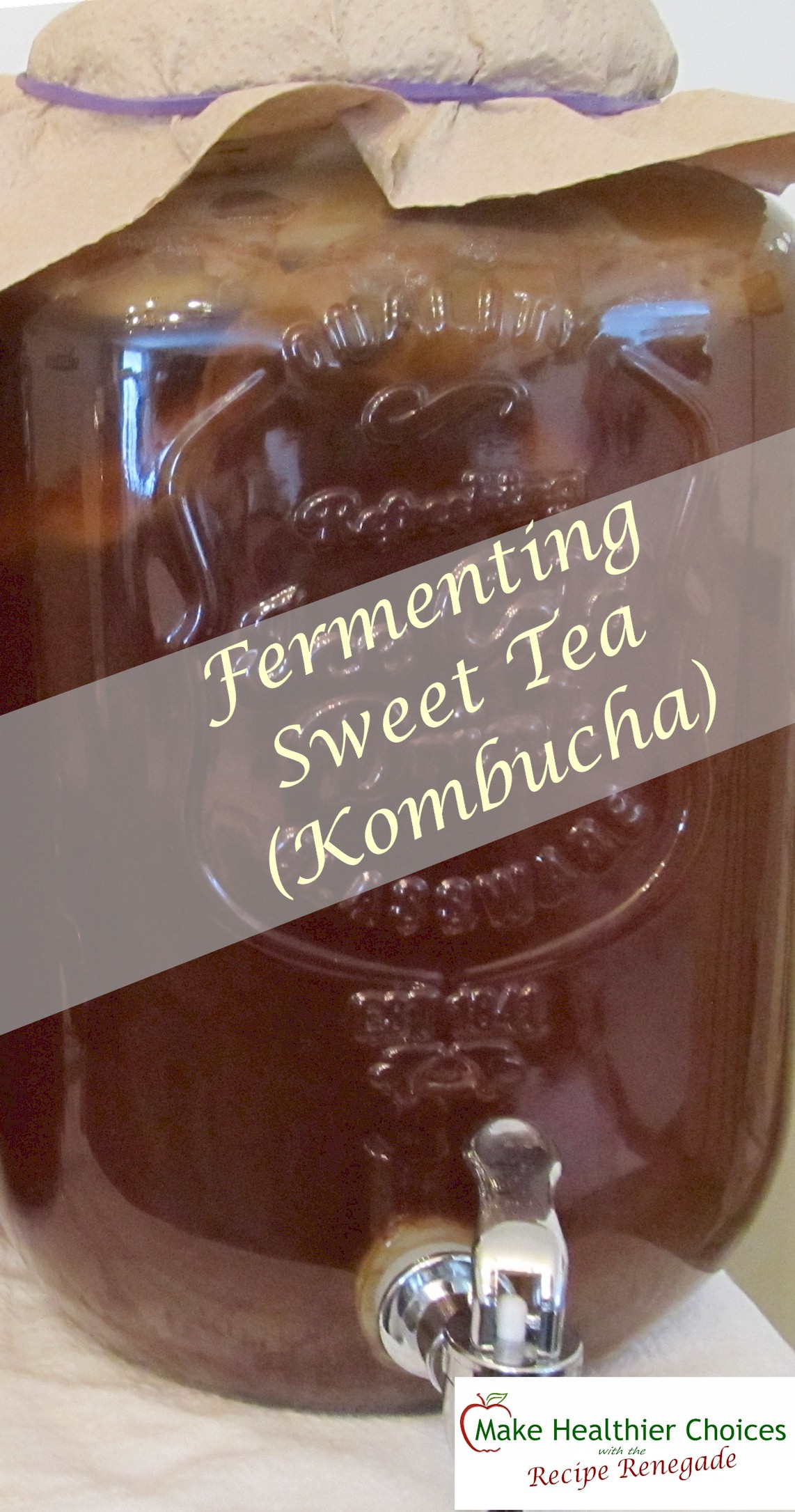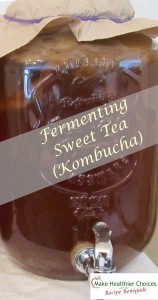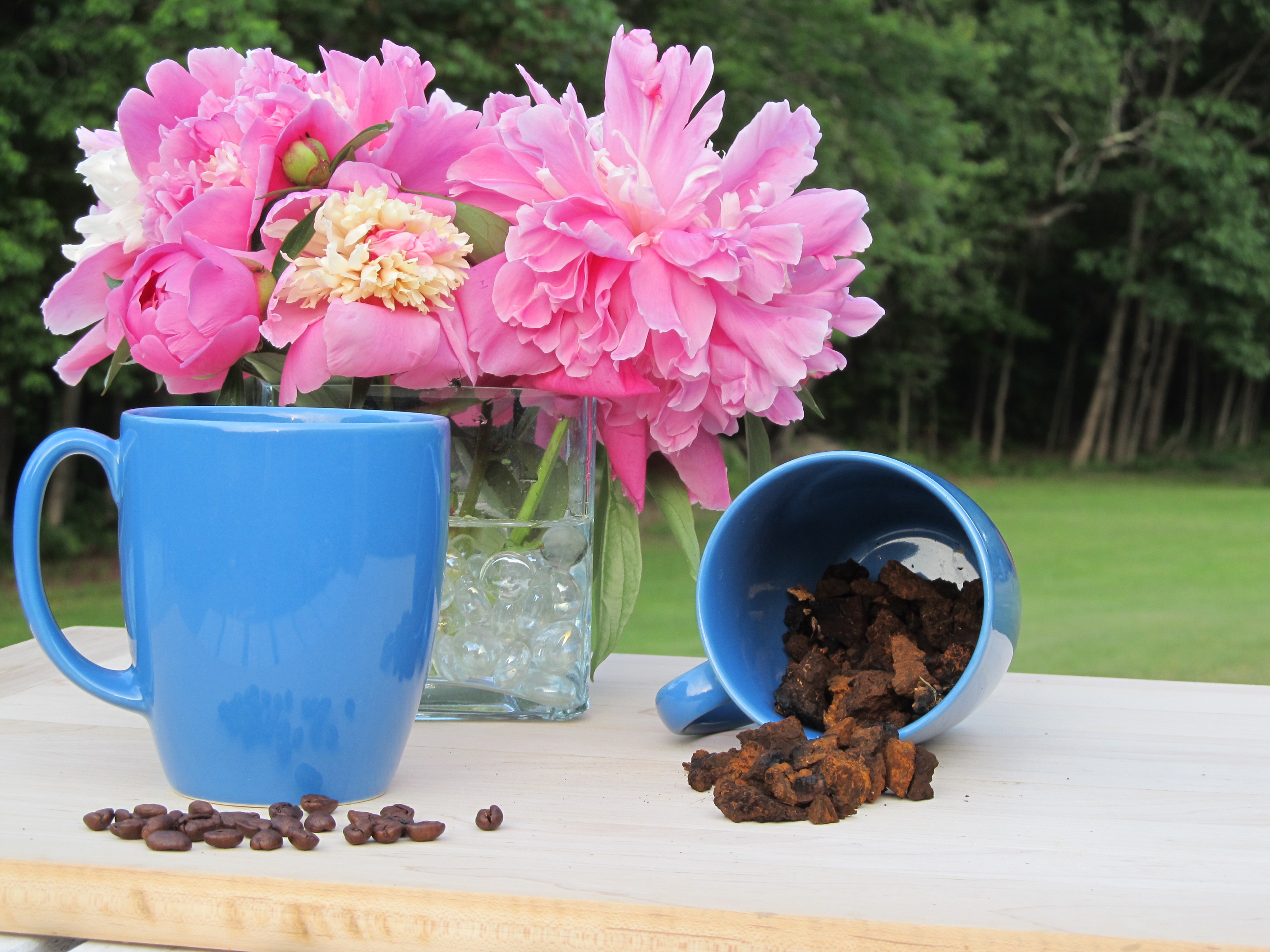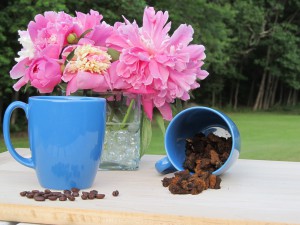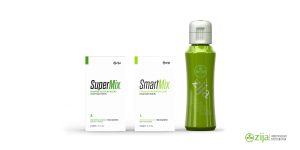UPDATE: I didn’t get to know Audrey too well, because I only met her twice. In those brief visits, it was obvious to me that she was one of the kindest people I had ever met. Even though I didn’t know her well, I was saddened to learn that she passed away on April 14, 2024. Personally, I think that earth lost an angel that day.
My friend, Audrey Heath, not only shared her Pine Needle Tea recipe with me, she was kind enough to drop off her finished product for me to try. She definitely kicked it up a notch or three! I’ve made pine needle tea for many years, but found mine to be quite boring. You won’t find Audrey’s tea boring!
Use ONLY Eastern White Pine Needles!!!
There are lots of pine trees in North America, so please be CERTAIN that your tree is, in fact, an Eastern White Pine. Using the wrong needles, or drinking too much, could make you quite sick or could even be deadly. If you are unsure, find your county forester or contact your cooperative extension service to help you identify yours. Then check with your doctor before drinking!
You can find more information at Nature.org and Farmer’s Almanac. Found on nature.org: “Fun Fact: White pines are the only five-needle pines found east of the Rocky Mountains and get their common name from the number of needles in each pine: W-H-I-T-E!”
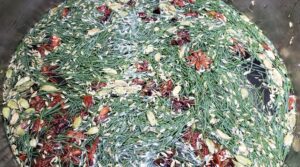
Does Suramin Come from Pine?
Somehow, a rumor started that Judy Mikovits said Suramin came from Pine. Do pine needles or Pine Needle Tea contain Suramin? Absolutely not! according to Judy Mikovits. Suramin is a synthetic drug that doesn’t come from pine. Here’s exactly what she said:
“I didn’t say pine needles. I talked about a 100-year-old essential medicine, a synthetic drug made by Bayer-Monsanto, called suramin. And suramin is a synthetic drug, but it’s known to stop the expression of retroviruses, and viruses . . . Suramin does not come from pine needles, but there are terpenes. That’s a class of chemicals where we get turpentine that will stop a lot of toxins and pathogens, but it’s also very toxic. . . . . ” ~~ Judy Mikovits
Hear What Judy Mikovits Said about Suramin (at 9:50 Minutes)
- 2 Gallons of Clean Water
- Large Coffee Can of Eastern Pine Tree Needles cut into 1" lengths.
- 20 to 25 Star Anise
- 2 Tablespoons Cardamom
- 2 Tablespoons Fennel Seeds
- Bring water to a boil, turn off.
- Add remaining ingredients and let sit for 20 minutes.
- Re-heat and simmer for 20 minutes.
- Cool, strain, bottle, and refrigerate.
- Make certain you strain; you don't want to swallow any pine needles!
Remember that boiling releases the terpenes and over 116° kills the Vitamin C. 160° causes Vitamin C to explode. If you are interested in keeping the Vitamin C in tact, bring the water to a boil, let it cool to 115°, and then add the ingredients and let steep.
DO NOT DRINK THIS TEA WITHOUT FIRST CHECKING WITH YOUR DOCTOR!!!
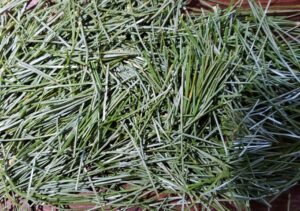
If you have a chance, look up what benefits might be found in star anise, cardamom, and fennel.
Statements on this page and website have not been evaluated by the FDA and are NOT intended to diagnose, prescribe, treat, prevent or cure any disease, condition, illness, or injury. Please do not use any information on this website in place of a doctor. Please consult a doctor before making ANY dietary changes.
